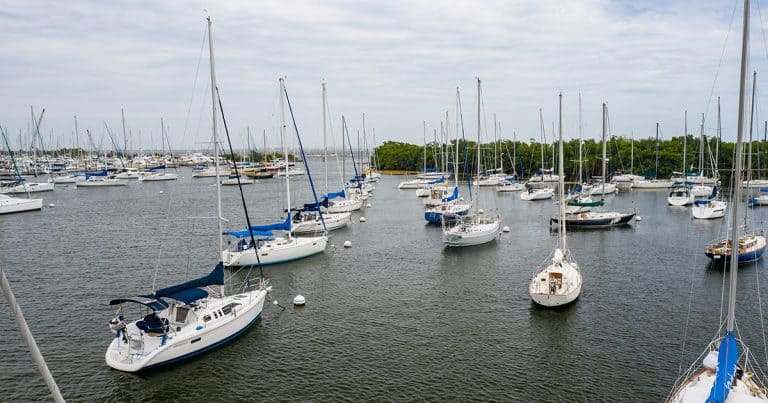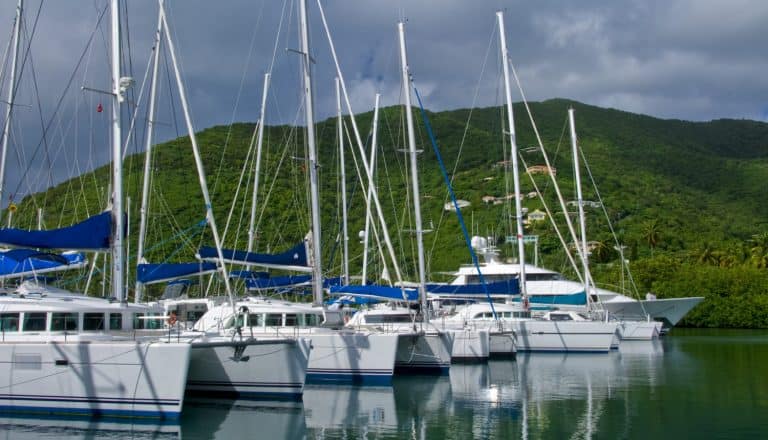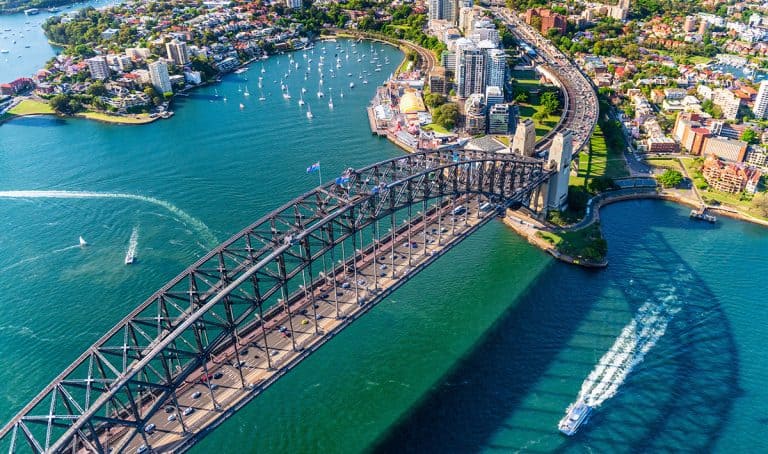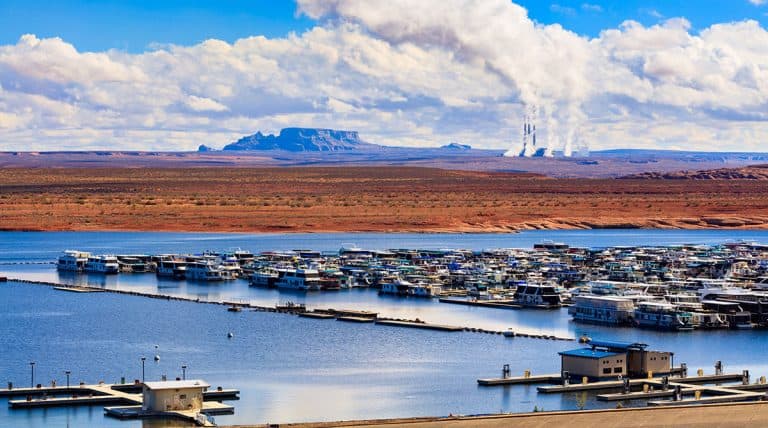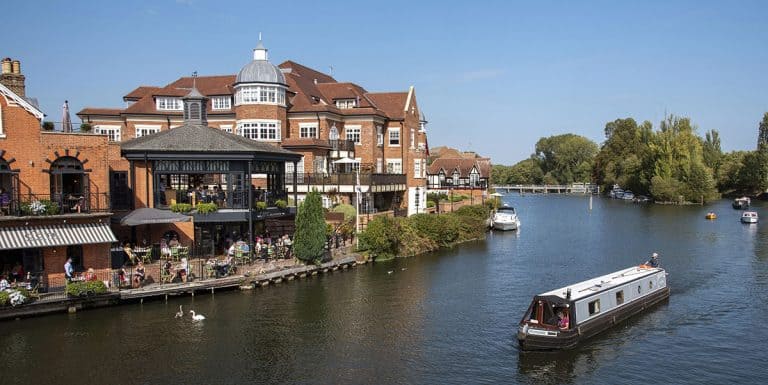Best Size Boat For Liveaboard
Who doesn’t occasionally dream of selling everything to move aboard their own boat? Imagine sailing the oceans or perhaps just experiencing marina life while enjoying the financial freedom of living a frugal liveaboard life.
If you have gone one step beyond just daydreaming and thinking about making this a reality, then one of your first considerations is likely what size boat to get.
Even bigger boats offer very little living space than most apartments, not to mention houses, and can easily feel cramped. Therefore, it’s tempting to think that bigger is better, but bigger often comes with some downsides: large boats provide more space, but they cost more and are harder to manage. Smaller boats are easier to manage and cost less, but their small frame makes them less comfortable and less good for long trips.
The table below summarizes the general recommendations for liveaboard boat sizes.
| Purpose | 1 person | Per added person |
|---|---|---|
| Ocean crossing | 35 ft. | + 5ft. |
| Shorter trips | 20 ft. | + 5ft. |
| Staying in marina | 40 ft. | + 5ft. |
These recommendations are not set in stone as the decision depends on your personal preferences. This article will go through various factors that should be considered before deciding to purchase any boat.
How Many People Should the Boat Accommodate?
A typical monohull sailboat should generally be at least 5 feet longer per added person in addition to the owner’s minimum requirements. Let’s say you need a small 20-footer if you lived alone on the boat. Adding a spouse would increase that to 25 feet.
These are general estimates based on sailboats with the common 1/3 dimension (3 feet length per 1-foot width).
A single person can live in very little space if they so desire. But as soon as you add another person, things do change a bit. You will have to be more considerate of privacy and the other person’s preferences. Naturally, this does depend on how much space you need for your personal belongings and how well you manage being cramped together. As well as other factors, such as how many separate cabins you will need.
A family of four would generally need at least a 35-foot monohull, but 40 would be preferable, including a separate cabin for the children. But, of course, smaller is an option depending on personality.
If you are sailing solo, you may not want to go above 35 – 40 feet. Boats bigger than that can be hard to manage on your own, even as an experienced sailor.
Where Will you Be Sailing?
If you plan on crossing oceans, perhaps circumnavigating the earth, you may need a larger boat. This is partly because you probably will want to accommodate at least two or three people, food, and personal belongings. Moreover, several people sharing a boat in the ocean for a month (or longer), with no opportunity to go for a walk, will need a bit more private space.
On the other hand, if you plan on sailing near the shore and stay in the marina some of the time, you will generally require less space. You can always go onshore if you need to stretch your legs or get a little time alone.
However, suppose you plan on never leaving the marina. In that case, you may want to consider buying the largest boat possible within your budget, as it will provide a lot of space without any of the downsides to managing a large boat. Alternatively, you could consider buying a houseboat. Trawlers and sailboats are built to move, but their hydrodynamic design offers much less space than a houseboat.
Sailboat or Trawler?
Trawlers are more “house-like” as they are taller and usually have a second deck. This means you can buy a shorter boat than if you acquired a sailboat, and you will be more comfortable overall. If you a very tall, a trawler may be your only option for long-term liveaboard, as you will constantly be stooping when moving about in a sailboat.
Thanks to its dimensions, a 40-foot trawler will feel like a palace compared to a similar-sized sailboat. The downside is that they run on fuel which provides you less flexibility in terms of where to anchor, and you will have to plan any long trips accordingly.
Boat motors also drink a lot of fuel, and a trip across the Atlantic can easily cost thousands of dollars. Most trawlers don’t handle rough seas very well due to their higher center of gravity. For all intents and purposes, trawlers are not made to cross oceans unless you are willing to spend hundreds of thousands or more on a large boat and multiple thousands more on fuel.
However, the lesser-known motorsailer is also an option. Motorsailers are sailboats with a more powerful motor (or vice versa), a larger propeller, and a wider beam. Motorsailers are not made for high-speed sailing, and I would not cross oceans in one. Still, they do offer a combination of more freedom to travel independently of access to fuel and a better layout in terms of comfort and getting more interior space out of a shorter boat.
Catamarans
A catamaran is also a great option if you can afford it. Catamarans are much wider than monohulls (about 1 foot wide to 2-foot in length). They provide a more comfortable living space than even trawlers while still being able to cross oceans. Unfortunately, catamarans do cost a great deal more than monohulls.
Will You Be Mooring/Berthing?
If you plan on anchoring or mooring, you may need a larger and solid dinghy to bring you to the harbor in a safe and comfortable matter. Whereas if you plan to stay in marinas most of the time, you may not need a dinghy to get ashore. At least not a very big one.
While a dinghy can be towed by your boat, it will increase drag and maneuverability. A better alternative is to use a davit, but be aware that a small boat may not be able to carry a large dinghy comfortably. If your dinghy is inflatable, you may also want sufficient space on the deck that you can lay it out and fix a puncture.
Besides, larger boats are generally safer for ocean crossing as they manage large waves better. A 40-foot boat is generally recommended, although much smaller boats have been used.
On the other hand, if you stay close to shore, a smaller boat may be safer than a big heavy one. This is because smaller boats have a shallower draft, making them less at risk of running aground or hit a reef.
What Is Your Budget?
Money has a lot to say when we are looking at boats, as it does with most other decisions in life. And while big boats are usually preferred due to the bigger living space, they also cost a lot more.
Purchase Price
A big boat in good condition will often cost the same as a small house, whereas small boats are much more budget-friendly.
If you are willing to do the work and learn what it takes to restore a boat, getting a fixer-upper can save you a lot of money and possibly get you a boat that would otherwise be out of your budget range. But be prepared to spend a lot of time learning, repairing broken stuff, and swearing.
Marina Fees
Marina fees also increase with the size of your boat as most marinas charge by the foot. In some places, it’s based on just the length, while other marinas charge extra for wide boats, like catamarans. Docking a small 22-foot sailboat in, say, Florida will on average cost about $350 per month, whereas a 40-footer will cost $600.
Note that marina fees vary greatly depending on location and amenities. Higher-end marinas charge $25 or more per foot, making big boats much more costly to dock.
On the other hand, if you plan to stay in the same marina for an extended period, you will usually pay much less per day, meaning larger boats are more affordable to own.
So, What is the Right Size?
It really depends on your needs. If money is not an option, get something a little bigger than you think you may need based on the considerations above. If you are on a strict budget, go a little smaller than you think you would prefer, but don’t exaggerate.
If you want or need a big boat, don’t let lack of sailing experience hold you back, as you may regret it when you do have more experience. Instead, get the size you need and find someone willing to teach you, or get sufficient practical experience before you buy.

